Patiria miniata – Hopkins Marine Station
 Jun 16, 2018 • 10:03 PM UTC
Jun 16, 2018 • 10:03 PM UTC United States
United States 140x Magnification
140x Magnification Animals
Animals
RebeccaKonte
Scientific artist, using art as a tool for scientific storytelling. http://www.rebeccakonte.com/
27posts
25comments
22locations

I had the pleasure of visiting the Hopkins Marine Station in Pacific Grove, California this past week. The space was absolutely teeming with fascinating creatures large and small.
In this post, I’ll share a story focusing on Patiria miniata and follow-up later with some other posts of data and drawings stemming from this trip soon after.
In this post, I’ll share a story focusing on Patiria miniata and follow-up later with some other posts of data and drawings stemming from this trip soon after.

Adult Patiria miniata

Patiria miniata larva through Foldscope
Patiria miniata , or the Bat Star, is a species of sea star usually found in the intertidal zone (the area that is above water at low tide and under water at high tide) and its range primarily extends from southern Alaska to the Gulf of California & Mexico.
Patiria miniata , or the Bat Star, is a species of sea star usually found in the intertidal zone (the area that is above water at low tide and under water at high tide) and its range primarily extends from southern Alaska to the Gulf of California & Mexico.


Larvae were held at the Marine Station in large glass jars. With a turkey baster, we siphoned out a few and viewed them through a foldscope. Slides were prepared on glass slides with a spacer, sometimes a coverslip with some clay lifting the corners / or a thin sheet of PVC with a hole cut in the center to create a well.
Below is a gallery of videos I collected– but first here is an image labeling the general anatomy of the larva to help orient before viewing!
Below is a gallery of videos I collected– but first here is an image labeling the general anatomy of the larva to help orient before viewing!

A bipinnaria is the first stage in the larval development of most sear stars, image source:http://oceandevbio2014.blogspot.com/2014/04/p-parvamensis-and-hydropore.html
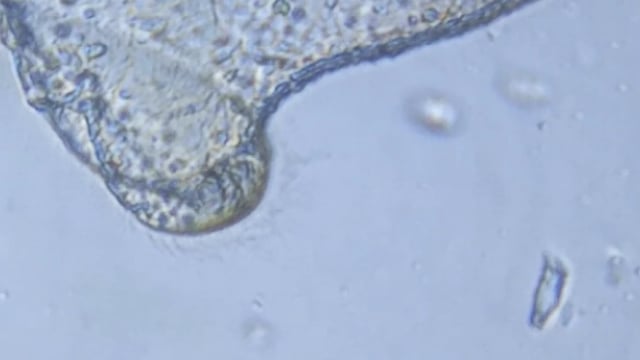
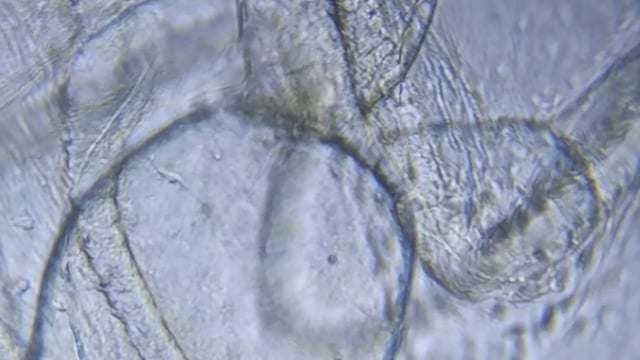
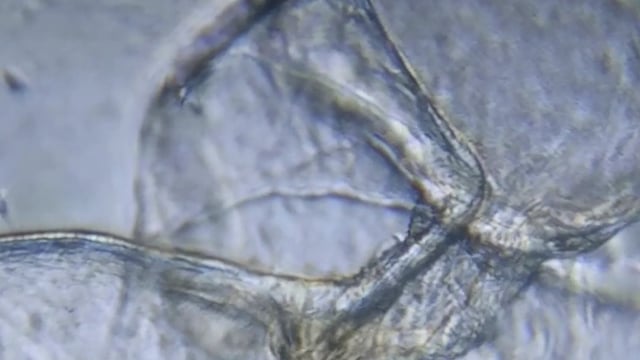
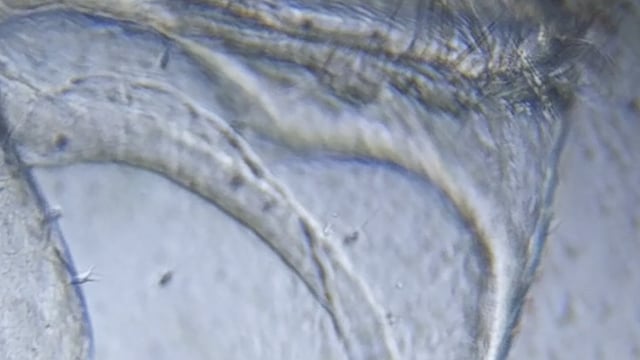
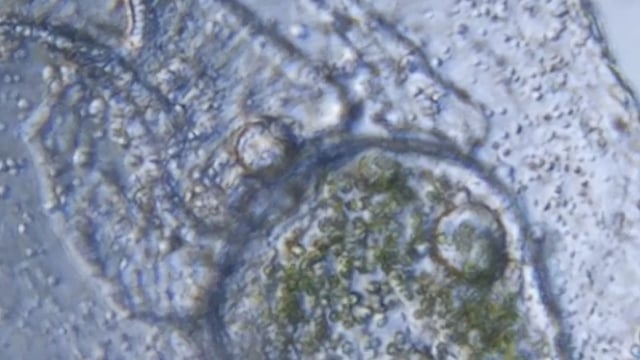
—
Oh! How could I forget to mention, this organism is a familiar friend with quite the meaningful backstory to me. A Patiria miniata larva was the subject of the first artwork I ever made in collaboration with the Prakash Lab. A couple years ago William Gilpin, PhD student in the lab, and Manu, introduced me to this creature and the beautiful vortices its ciliary bands create. In anticipation of their upcoming paper at the time (which can be read here) , we created this painting as a visual analogy of the phenomenon described, a starry-night-esque landscape of whorls, churning the sea to capture food in an astounding display of beauty.
Oh! How could I forget to mention, this organism is a familiar friend with quite the meaningful backstory to me. A Patiria miniata larva was the subject of the first artwork I ever made in collaboration with the Prakash Lab. A couple years ago William Gilpin, PhD student in the lab, and Manu, introduced me to this creature and the beautiful vortices its ciliary bands create. In anticipation of their upcoming paper at the time (which can be read here) , we created this painting as a visual analogy of the phenomenon described, a starry-night-esque landscape of whorls, churning the sea to capture food in an astounding display of beauty.

It was delightful to revisit this organism after some time. Even just to see it float ambiently was a thrill. Access is incredible, and what a magnificent, unthinkable journey this little creature kicked off for me.
Until next time!
Rebecca
Until next time!
Rebecca
Sign in to commentNobody has commented yet... Share your thoughts with the author and start the discussion!

 0 Applause
0 Applause 0 Comments
0 Comments

















